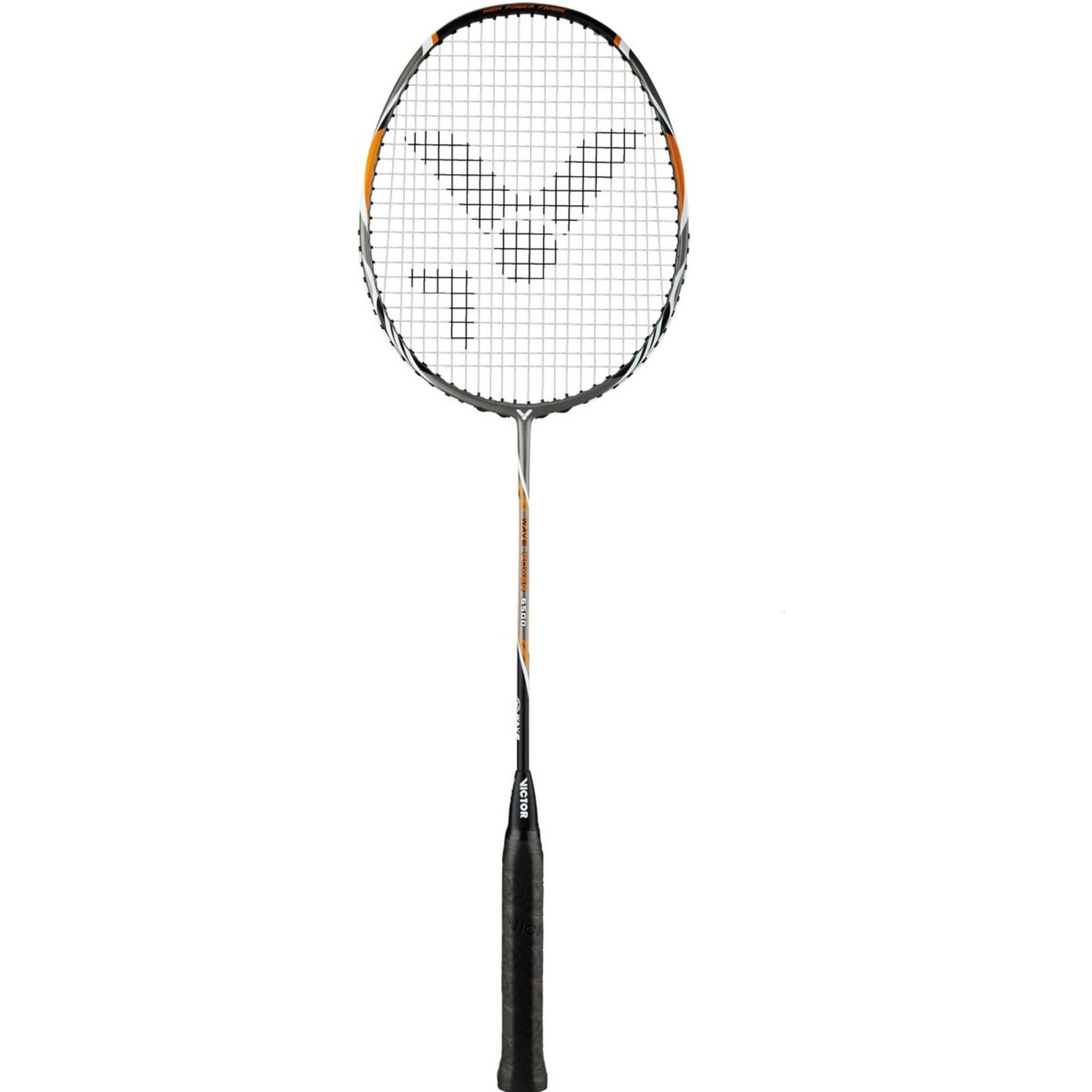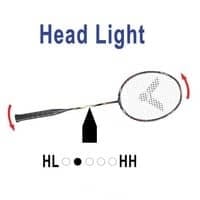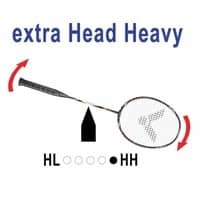Badminton racket balance advice
Next to flexibility, the balance point is probably the most discussed and well-known term in the badminton world. We believe that this counts for about 15% in the choice of a racket. The balance can strongly influence your style of play offensively or def
Buying a badminton racket is easy, but picking the right one is much harder. Or, you need to know exactly which specifications are completely suitable for your style of play. Still, you don't always know how the racket will react on the court.
To help you buy a badminton racket and to explain why certain factors affect your racket choice, we have written a series of blogs. Or currently in preparation. Here you will find a complete explanation from our KW FLEX badminton specialist about balance!
How important are the following factors of a racket:
| Grip and grip size | 25% |
| Stringing | 20% |
| Balance point: head heavy ○○ ● ○○ Head light | 15% |
| Weight: i.c.w. Balance point | 15% |
| Flexibility: stiff ○○ ● ○○ Flexible | 15% |
| Frame technology and material | 10% |
| - 'snapback' made of steel | |
| - 'snapback' made of steel | |
| - Thickness of blade | |
| - Thickness of shaft | |
| - Aerodynamics | |
| - Maximum stringing force | |
| Total | 100% |

Balance point badminton rackets
Next to flexibility, the balance point is the most discussed and well-known term in the badminton world.
In our opinion, it counts for 15% in the choice of a racket. The difference in balance can determine that the shuttle lands half a meter further or shorter.
The balance point is related to the weight of a badminton racket. It falls naturally within the law of gravity and leverage. We are not physicists and keep it a lot simpler because we just call it a heavy or light racket.
A 70 grams racket with a high balance point can feel as heavy as a 90 grams racket with a very high balance point. Do not forget to take the weight into account when buying a racket (we will talk more about this later).
Which balance points can you choose from?
| Extra head heavy | (head heavy ●○○○○ head light) | 31,6 >> cm |
| Head heavy | (head heavy ○●○○○ head light) | 30,5 - 31,5 cm |
| Even balance | (head heavy ○○●○○ head light) | 29,5 - 30,4 cm |
| Head light | (head heavy ○○○●○ head light) | 28,5 - 29,5 cm |
| Extra head light | (head heavy ○○○○● head light) | << 28,4 cm |
In our badminton webshop you will find a range of approximately 200 badminton rackets:
- 11% Extra head heavy rackets
- 34% Head heavy rackets
- 48% Even balanced badminton rackets
- 6% Head light badminton rackets
- 1% Extra head light badminton rackets
Which balance point do I need?
To determine which balance for your badminton racket suits your playing style, we first explain the advantages and disadvantages of Head Heavy & Head Light rackets.
Advantages Head Heavy badminton rackets:
- It provides more power and offers the potential to hit the shuttle further back
- It gives more control in a long stroke like the clear
Disadvantages Head Heavy badminton rackets:
- It requires more wrist strength
- It slows down the stroke movement, so less useful for e.g. a smash catch.
- Less useful for trick shots, quick short strokes in doubles and backhand.
Advantages Head Light badminton rackets:
- A lot of speed at the net and handy for smash defense
- Often more power in short quick strokes (such as at the net)
- Good to intercept the shuttle in between a rally
Disadvantages Head Light badminton rackets:
- Limited maximum power from the back court
(The Yonex Astrox 100 ZZ is an example of a head heavy badminton racket)
Balance point of your own racket
It is important to determine the balance point of your own racket, but why? If you are looking for a new badminton racket you do not want to deviate too much from your current racket. You do not want the racket to be too heavy or too light compared to what you are used to. The racket will not feel right.
Choosing the wrong balance point can be a waste of money!
How do I determine the balance of my racket?
Before you determine your balance point, make sure that the grip thickness is as thick as your desired new thickness. G4 = about 8.6 cm circumference, G5 = about 8.3 cm circumference. This is because it gives the racquet immediate weight at the end of the racquet, which makes the balance different.
For comparison:
An overgrip of 6 grams will make the balance point 1 cm less. So if you would take a racket with a 2 cm higher balance point, it would feel like the racket weighs 10 grams more.
To determine the balance point, do the following:
- You can find this balance point by placing the shaft on the tip of your nail/finger.
- Move the shaft until you have found the center of gravity. The racket will no longer fall to the left or right.
- Measure the distance from the bottom of the handle to the balance point in the shaft.
Are there any strings in the racket? Then subtract 1 cm from the determined balance point. Strings in a stringing system weigh about 4,5 grams.
Conclusion balance
Assuming that the weight remains the same, we recommend that the balance point be shifted by no more than 1 cm what you are used to.
A balance point that is 1 cm higher or lower can be felt well by an advanced badminton player. Only go for 2 cm difference if you really want to make a big switch. Keep in mind that it will take much longer to get used to the racket.
A Head Heavy badminton racket makes the stroke slower, but gives more power.
So it is perfect for the player who likes to push the opponent in the back. After a high service from the opponent in the backfield, want to smash right away? Always wanted to attack from the backcourt with a hard hit? Then this is your choice!
A Head Light badminton racket provides much more speed.
Perfect for the doubles player or tactical singles player who likes a lot of varied strokes. Do you want more power in your backhand and do you like short and fast strokes? Then a Head Light racket is for you!
Is it that simple?
No, of course there are exceptions, and you cannot draw conclusions from the balance alone. The balance point is only one of the two factors that determine how heavy a badminton racket feels. The second factor is the weight of the racket.
A 75 gram (6U) Head Heavy racket can feel as heavy as an 85 gram Head Light racket.
So how does this work in practice? What is the difference between these rackets? We have already found out for you.
As an example, we have taken the following rackets:
- Victor ARS Light Fighter 80: 74 grams (6U), extra Head Heavy
(head heavy ●○○○○ head light). - Victor Wave Power 6500: 85 grams (3U), extra Head Light
(head heavy ○○○○● head light).
Advantages Victor ARS Light Fighter 80:
- More strain on wrist during stroke movement
- Feels lighter in the hand, saves more energy
- For the less powerful player who wants to hit the shuttle further, this racket is better suited.
The disadvantages of the racket above are the same as the advantages of the other racket.

Advantages Victor Wave Power 6500:
- An extra solid feel and more shock absorption
- More load on elbow, biceps and bigger muscles instead of the wrist
- For the powerful player who wants more speed, this is a better option

Badminton racket advice
If you buy a racket online, make sure you are well-informed and get enough advice. Would you like to get additional information from our badminton expert? No problem at all! Our badminton specialist is always available for advice online, by phone/WhatsApp +31-616 501 686 or in our badminton store in Rijen! He will help you with the purchase of the right badminton rackets.






